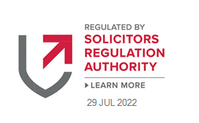Divorce and dissolution of civil partnerships
Our civil partnership dissolution lawyers are here to help. Call us today on 020 3621 0111.
The irretrievable breakdown of a relationship is one of the most difficult life events to experience. If you are married or in a civil partnership, the process can be all the more complicated and/or stressful.
At Bellwether Solicitors, we are family law specialists offering a trusted and supportive divorce service.
Divorce is the only way to legally end a marriage, and while we know it can be daunting entering the process, we’ll advise you on all the options available, guiding you through proceedings.
We are accredited and approved.
Bellwether Solicitors is authorised and regulated by the Solicitors Regulation Authority under SRA number 627330.
We are subject to the rules set out in the SRA Standards & Regulations, which can be accessed here.
We are proud members of Resolution.







